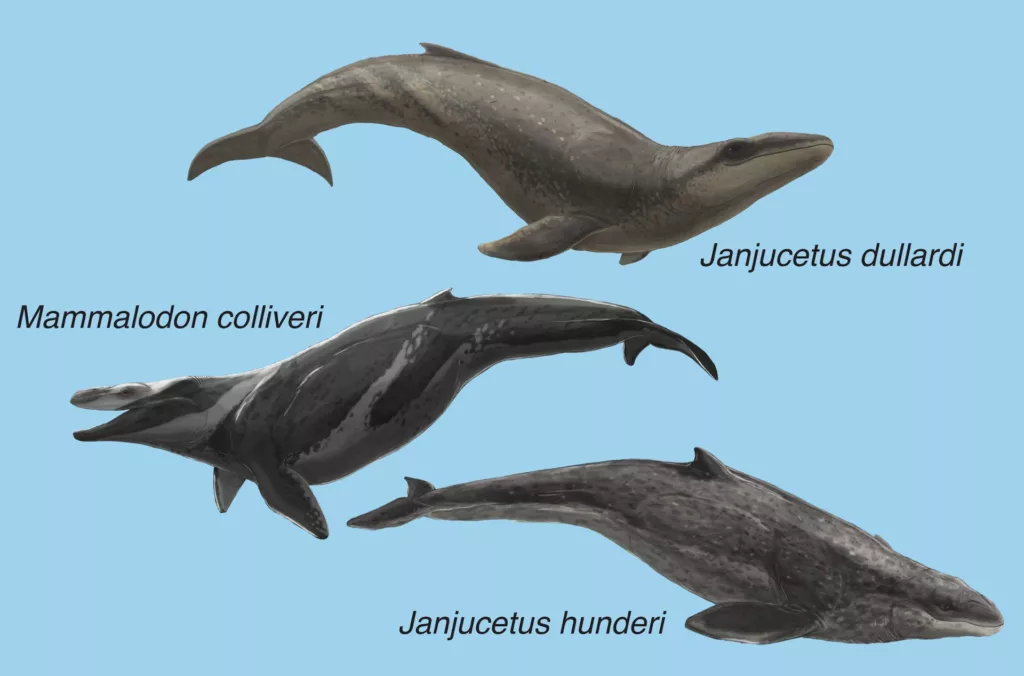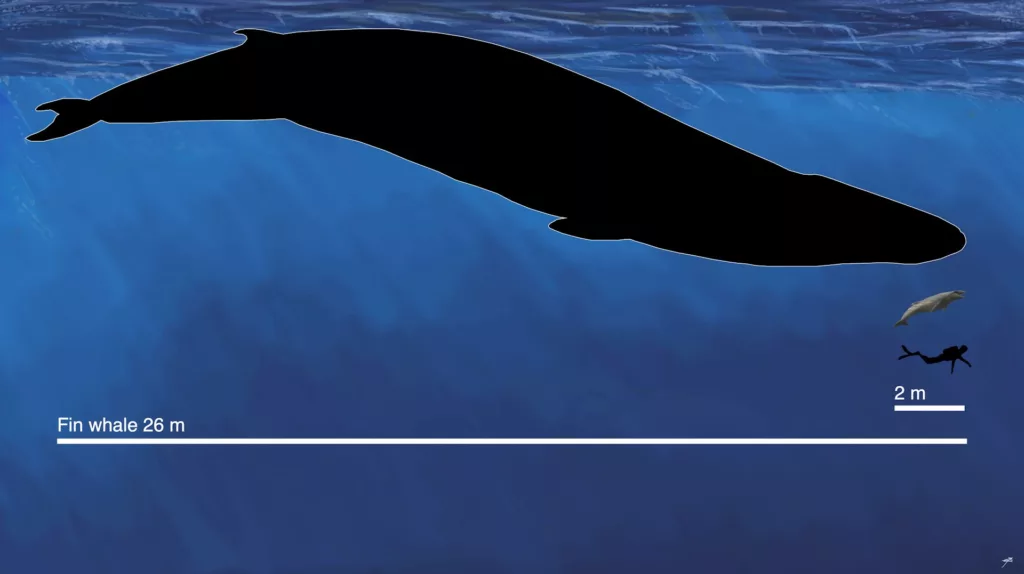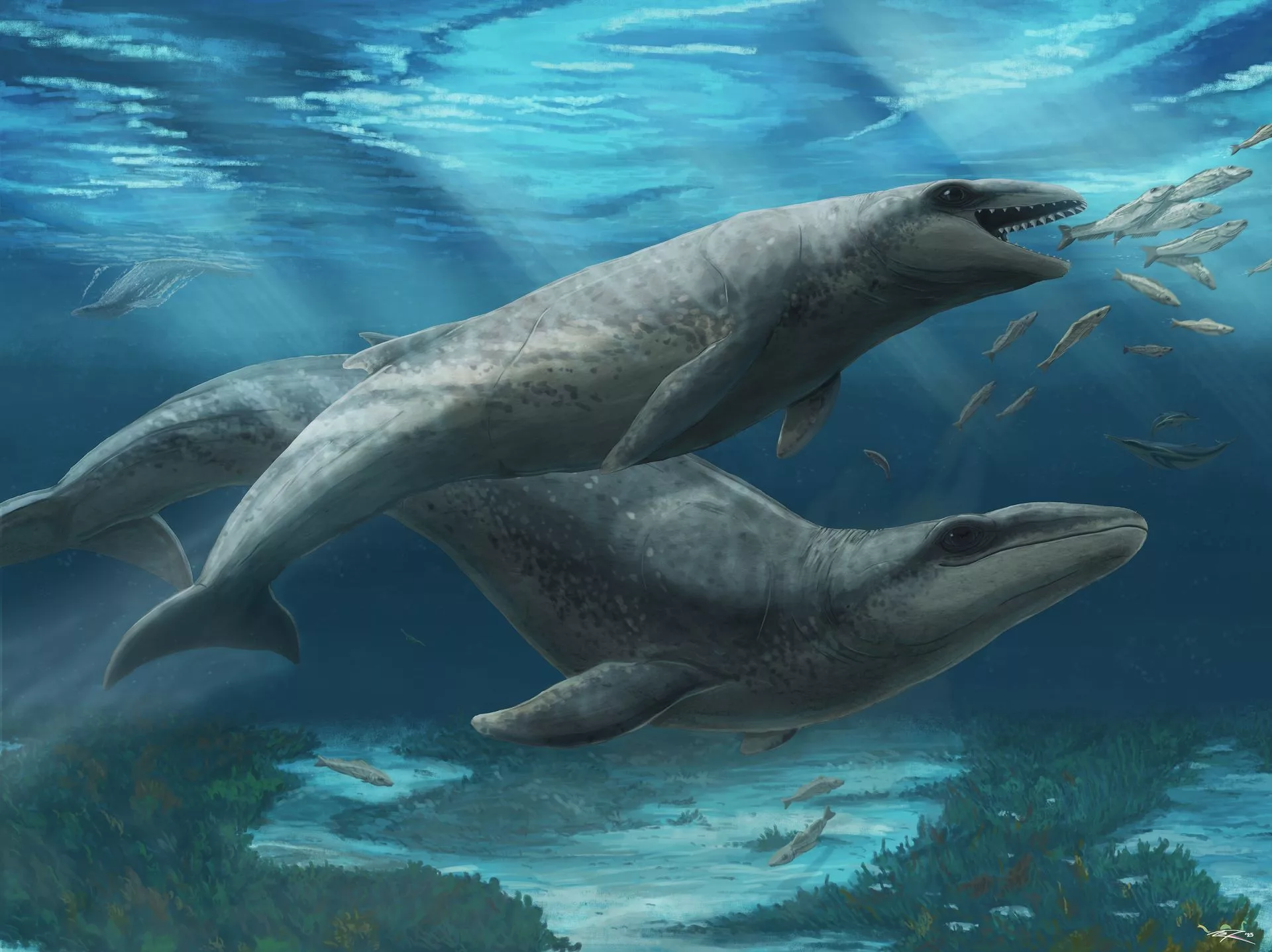Mammalodontids are an extinct group of toothed baleen whales from the Chattian period, found in southeastern Australia and New Zealand. Although three species have been named, most of the fossil material, mainly teeth and ear bones from Victoria’s Torquay Basin, has yet to be formally studied.
A new study reports on a new species of mammalodontid from a 25-million-year-old fossil found near Jan Juc, on Wadawurrung Country, along Victoria’s Surf Coast.
Scientists at Museums Victoria’s Research Institute have named it ‘Janjucetus dullard’. With large eyes, razor-sharp teeth, and a compact body built for hunting, this newly discovered ancient whale offers remarkable insight into the early evolution of baleen whales, the filter-feeding giants that now cruise our oceans.
Janjucetus dullardi wasn’t a massive whale; it was a dolphin-sized predator with a short snout, sharp slicing teeth, and big forward-facing eyes, built for speed and precision in ancient Victoria’s shallow seas.
How blue whales became the biggest animals to ever live?
Its fossil, a partial skull with teeth and ear bones, was found in June 2019 by beachgoer Ross Dullard.
Realizing its importance, he donated it to Museums Victoria, where scientists studied it closely. To honor his discovery, the species was named after him.
This pint-sized predator, just over two meters long, was no gentle giant; it was a juvenile member of the mammalodontids, a short-lived group of early whales that roamed the seas during the Oligocene Epoch (about 30 to 23 million years ago).

Ruairidh Duncan, PhD student at the Museums Victoria Research Institute and Monash University, said, “It’s essentially a little whale with big eyes and a mouth full of sharp, slicing teeth. Imagine the shark-like version of a baleen whale, small and deceptively cute, but not harmless.”
It’s the third mammalodontid species found in Victoria and only the fourth known in the world. What makes it extra special? It’s the first fossil of its kind to preserve both teeth and inner ear bones in such fine detail, key clues to how early whales ate, heard, swam, and behaved.
Earth’s first known giant creature
Using advanced microCT scans, scientists peered inside its ear bones. They found delicate structures like the cochlea, which likely helped this little predator sense its surroundings, crucial for hunting and navigating ancient seas.
The discovery of the fossil offers a rare glimpse into how early whales grew and evolved. It shows how their bodies adapted to life underwater, one bone at a time.
The fossil of Janjucetus dullardi was discovered in the Jan Juc Formation, a treasure trove of prehistoric marine life along Victoria’s coast. This site dates back to a time when Earth was warmer and seas were rising, much like today. And it’s quickly gaining fame as a global hotspot for early whale evolution.


By studying how ancient whales adapted to those warmer oceans, scientists are piecing together clues about how modern marine species might cope with today’s climate shifts.
This stretch of coast was once a cradle for some of the strangest whales ever to swim the seas. And we’re only just beginning to hear their stories echo through time.
Study offers new evidence of menopause in killer whales
With each tide and turn of the rock, Victoria’s coastline is revealing more pieces of the prehistoric puzzle. The research team is optimistic that more fossil discoveries are on the horizon. They’re not only studying freshly unearthed specimens but also revisiting long-overlooked fossils housed in the Museums Victoria State Collection, each one a potential key to unlocking ancient whale evolution.
Journal Reference:
- Ruairidh J Duncan, James P Rule, Travis Park, Alistair R Evans, Justin W Adams, Erich M G Fitzgerald. An immature toothed mysticete from the Oligocene of Australia and insights into mammalodontid (Cetacea: Mysticeti) morphology, systematics, and ontogeny. Zoological Journal of the Linnean Society. DOI: 10.1093/zoolinnean/zlaf090
